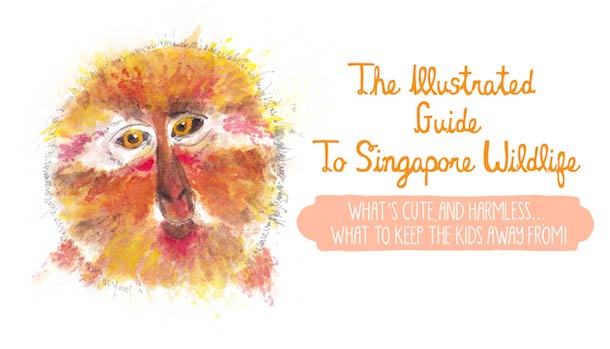
 Post Category - What's OnWhat's On - Post Category - Things to Do With KidsThings to Do With Kids
Post Category - What's OnWhat's On - Post Category - Things to Do With KidsThings to Do With KidsWe all know our home is an urban jungle, but if you’re a high-rise city slicker, you might not realise just how much wildlife lives on our sunny shores, until you venture a little off the beaten track that is! If you’re planning on hiking or heading to some of Singapore’s leafier suburbs, you might want to keep an eye out for some pretty nifty critters (not least because some are worth steering well clear of!). We’ve rounded up the most exciting Singapore species (to us anyway!) and we asked our buddy, illustrator Marie Pottiez, to help us out with some gorgeous drawings… How many can you check off your list mamas?
Civet Cat
Where do you find them?
The nocturnal civet cat, known in Malay as ‘musang’ and recognisable by its striped greyish brown body, is kind of like Singapore’s version of a mongoose (they’re not actually a cat). Found in forests, parks and mangroves, these shy, omnivorous creatures will sometimes brave the city and make their homes on urban rooftops.
Are they dangerous?
Civet cats are typically quite nervous, docile creatures and will go out of their way not to be seen. That said, don’t give them a reason to feel threatened as they can be quite vicious when they feel they have to be – especially if you mess with their babies!
What should I do if I spot one?
First of all, calm down mama. Second of all, stay a relatively safe distance away; it’s fine to observe them as they’re going about their own business, but the last thing you want to do is provoke them into a fight! 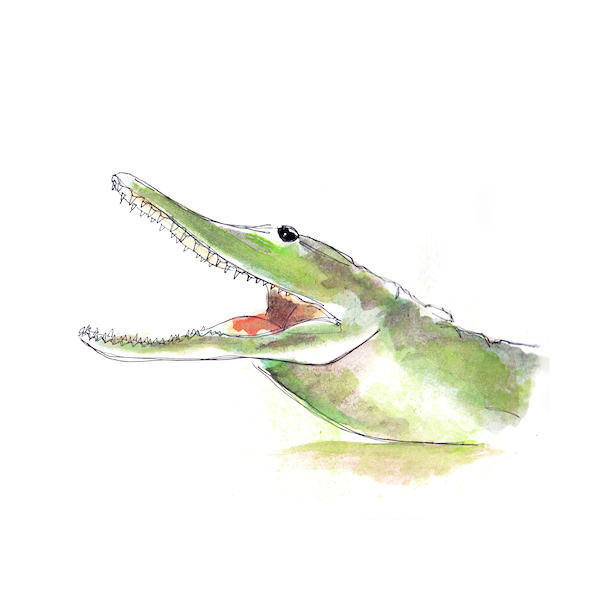
Estuarine Crocodile
Where do you find them?
The estuarine crocodile, more commonly known as the saltwater crocodile, can grow up to 8m long and has been spotted at estuaries and reservoirs such as the Singapore River, Kallang River, Kranji Reservoir and Pulau Tekong. The chances of you coming across one are extremely slim as they’re on the Red List of Critically Endangered Wildlife, hunted for their valuable skin.
Are they dangerous?
These big crocs are one of the world’s largest predators, with a bite so strong that it leaves the King of the Jungle and even the hippopotamus in the dust. They hunt mainly at night in brackish and freshwater habitats, however they mainly feed on fish, birds and mammals. In the day, they’re quite lethargic but don’t let that fool you – they’re surprisingly agile!
What should I do if I spot one?
Expert on all things scaly Dr Brady Barr told the Straits Times, “The chances of being hit by a car are greater than a crocodile taking a bite out of you.” That said mamas, it’s always good to be prepared in case you do come across one of these creepy critters, so when you see a warning to stay on the path and away from the water’s edge on a day out, pay attention! Do stay as calm as you can, slowly back away and no provoking the croc mamas – as a wise Disney lyricist once wrote, ‘No you don’t get friendly with a crocodile!’ 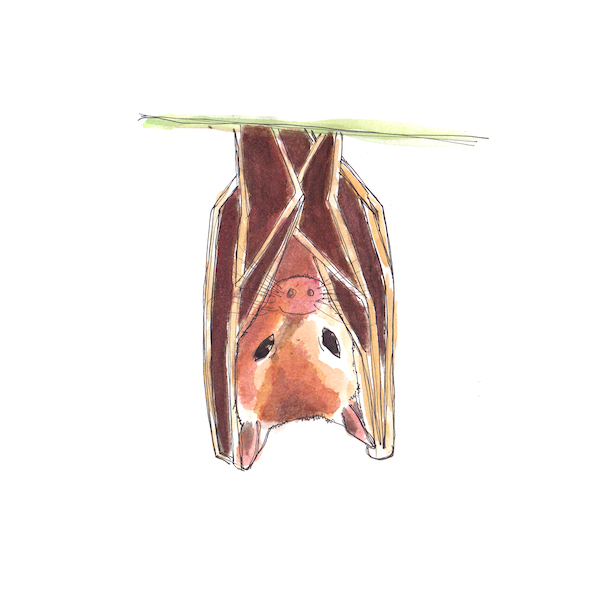
Fruit Bat
Where do you find them?
We’ve got over twenty different species of bats here in the little red dot, however you’re most likely to find fruit bats with a sweet tooth flapping about in the guava trees. While they adore forested areas and open country, they’re becoming more of a presence in urban areas – particularly if there are a few ripe fruit trees knocking about.
Are they dangerous?
These tiny mammals are like most animals — quite shy and harmless, however they’ve been known to whip out their teeth in a scrape if they feel like their life is on the line.
What should I do if I spot one?
They’re usually very harmless, so just leave them to feed and they’ll fly away when they’re done. If they’re tearing your garden apart however, make sure to harvest everything from fruit-bearing trees and keep it well lit – the good old hanging CD trick works a charm as well. 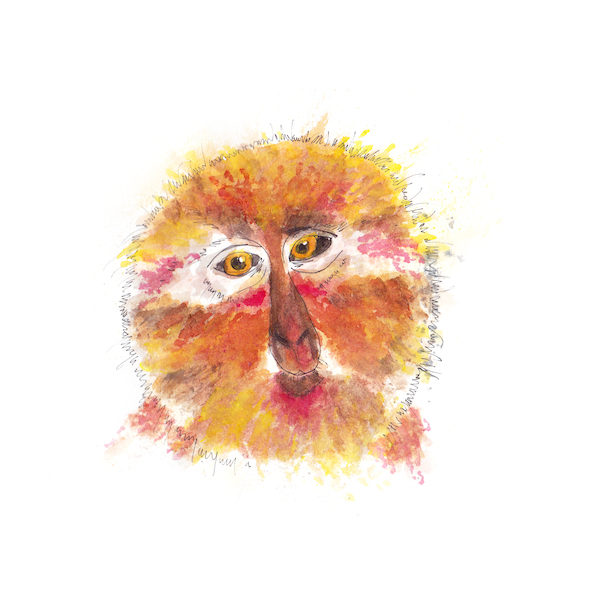
Long-tailed Macaque
Where do you find them?
Also known as the crab-eating macaque, these cheeky monkeys are the most common primate in Singapore and are highly intelligent. Preferring to live on the fringes of society in nature reserves or parks such as Bukit Timah or Admiralty Park, they do like being around humans – which is both a good and a bad thing.
Are they dangerous?
One of the big issues facing the wildlife community is that animals, particularly the macaque, are being fed by humans frequently and are growing dependent on them for sustenance. Badly behaved monkeys are becoming more commonplace, raiding houses and snatching food out of a passerby’s hands, meaning confrontations between startled people and monkeys are growing more frequent.
What should I do if I spot one?
You may have noticed the running theme here, but don’t feed the monkeys. Observe them from afar and leave them alone. Additionally, try not to eat so openly in case food is snatched from your hands and leads to mounting aggression. Throw away your litter in designated bins and try not to carry bags too openly, it’s all pretty serious monkey business! 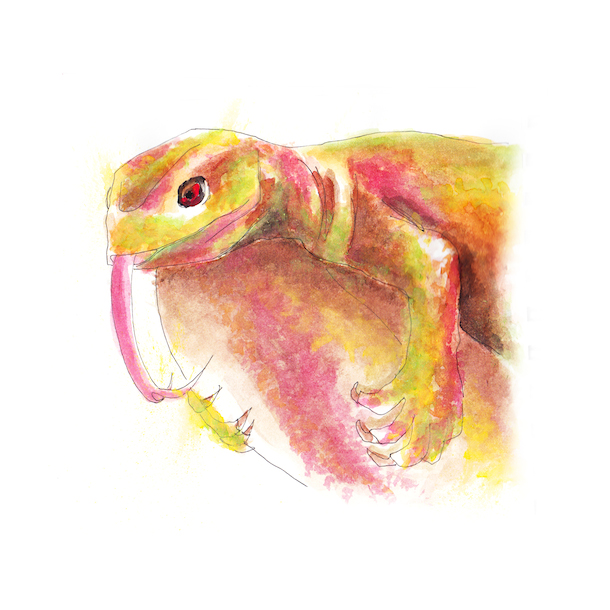
Monitor Lizard
Where do you find them?
These oversized lizards are commonly mistaken for their more terrifying sisters, the crocodile and Komodo dragon. They’re carnivores and feed on small animals like mice (who needs a cat when you’ve got a monitor lizard watching the house?) and scavenge as well; you can find them in forests, mangroves and occasionally they’ll potter about in your back garden if they happen to be passing through.
Are they dangerous?
Monitor lizards are typically quite indifferent to humans, however when threatened they use their massive tails as whips and can cause some pretty heavy damage. Their sharp teeth certainly aren’t anything to scorn either.
What should I do if I spot one?
Like most of the other animals in this list, leave the poor thing alone – it might even relieve you of a few rodents in the process. If it’s a pretty big one however, it’s probably best to keep it from coming into your home and ring the Wildlife Crime Unit or pest control to help you send it elsewhere. 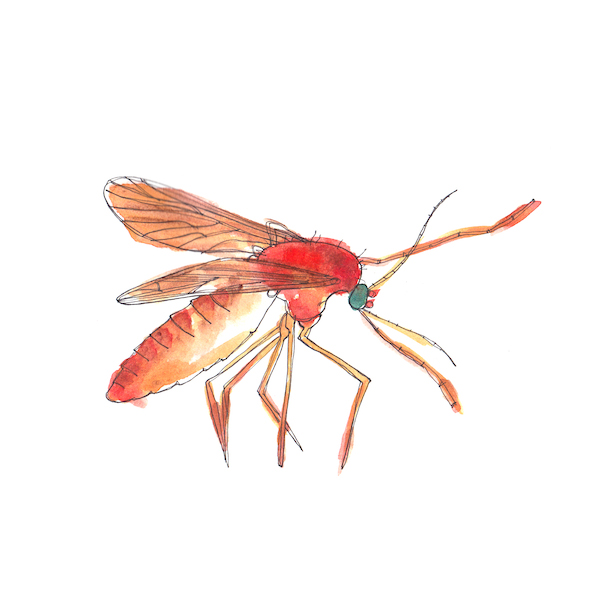
Mosquito
Where do you find them?
These little insects are the bane of any Singaporean mama’s existence and seem to be absolutely everywhere. You’ll find them congregated around populated areas where stagnant pools of water lie (their prime breeding ground), which makes them pretty gosh darned difficult to avoid.
Are they dangerous?
Mozzies for the most part will chow down on your blood and leave an irritating bump before flying away completely sated; bites are easily treated with a spot of Antisan or some other post insect-bite cream. However do watch out for the insidious black and white Aedes mosquito that carries dengue fever, as there’s been a spike in infection in the recent years. Check out Sassy Mama’s expert guide to avoiding dengue fever and please go to the doctor if you experience any of the symptoms we’ve listed.
What should I do if I spot one?
If you spot a mosquito, it’s probably for the best to keep away – especially if you spot the striped dengue carriers. There are ways to get around them by keeping yourself safe, which include removing all stagnant pools of water from your house, spraying appropriate mozzie repellant (make sure tots under six months old are using a natural insecticide) and covering exposed skin by wearing long sleeved shirts and trousers. If all else fails, there’s always the good old rolled up magazine. 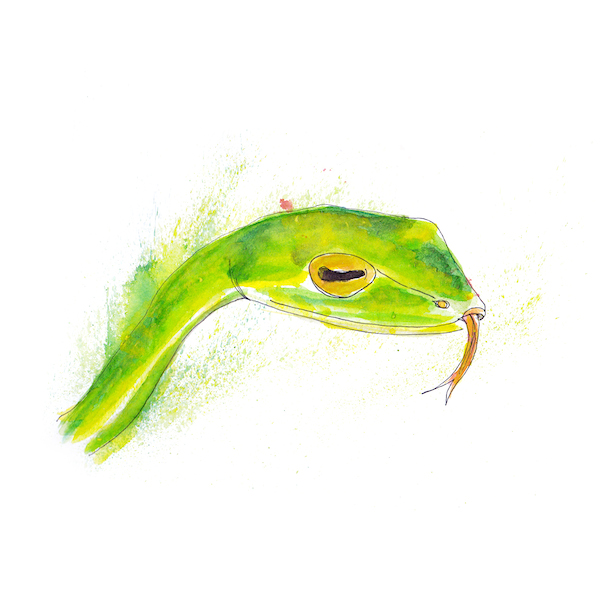
Oriental Whip Snake
Where do you find them?
These fluorescent green snakes tend to stick to areas they can camouflage in easily, such as bushes and trees in urban parks or gardens, as well as more densely forested areas. Feeding on small animals like birds and rodents, they can get up to two metres long!
Are they dangerous?
You can tell when these snakes are threatened as they have the unique habit of sticking out their forked tongue and leaving it out until the threat has abated. While they do bite, they’re hardly venomous and the toxin it emits is too weak to affect humans beyond swelling and an itch – however, some people can be very allergic to snake bites.
What should I do if I spot one?
These snakes are relatively docile, but do be wary of startling them into aggression! Keep the littles away and resist the urge to capture them as they’re very sensitive to their surroundings and therefore die very quickly. If you want a bit of help getting rid of them if they’re in your home, call a wildlife rescue hotline like Acres 24 Wildlife Rescue Hotline or AVA to help them find their way back to the wild. AVA also has a great guide to handling snakes here. 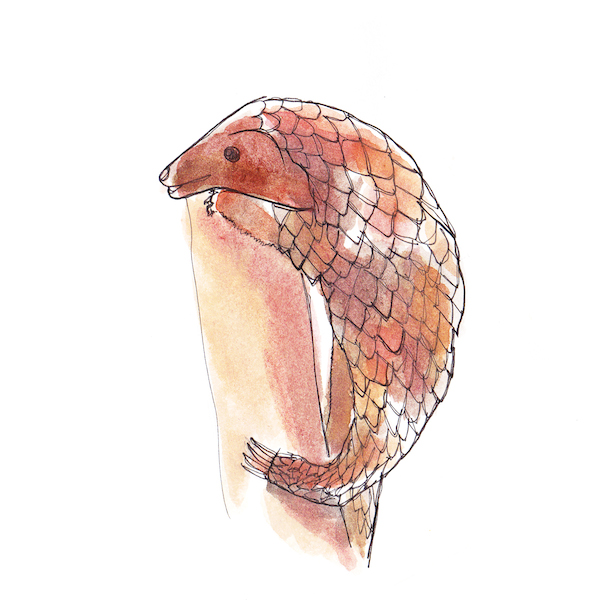
Pangolin
Where do you find them?
These endangered scaly anteaters love the nightlife, preferring to sleep throughout the day, and can be found frequently at nature reserves such as the Central Catchment and Bukit Timah Nature Reserve, and leafier areas of Bukit Batok and Pulau Ubin amongst others. Sometimes, they’ll even stray from the forested path and venture out into urban areas; however their scarcity means that they’re hardly seen nowadays.
Are they dangerous?
Don’t let their impressive armour fool you, pangolins are absolutely harmless. When frightened, they curl into a defensive ball and let out a horrendous stench that would put your littles’ stink bombs to shame – stand clear, mamas!
What should I do if I spot one?
If you’re lucky enough to see one, do observe them from afar! However don’t harass them or frighten them, nobody likes to be poked and prodded. Since they’re so rare nowadays, there are a number of wildlife organisations that would absolutely love to know about your sighting; call them if you can and contribute to the conservation and research effort. 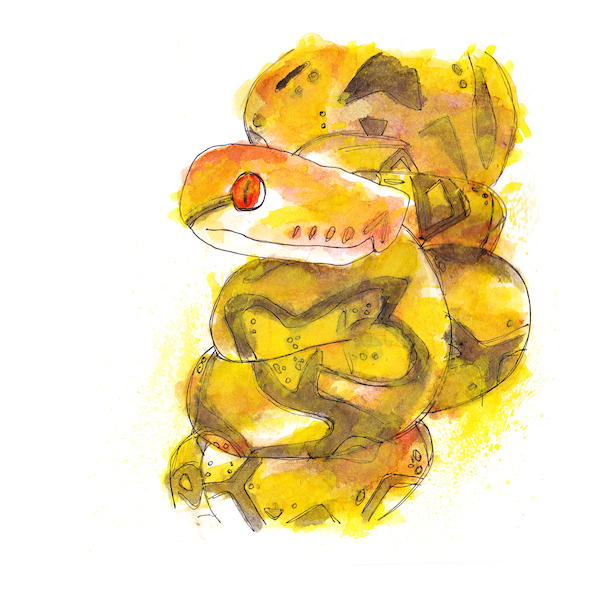
Reticulated Python
Where do you find them?
These highly adaptable snakes are the most commonly sighted snakes in Singapore, identifiable by their gorgeous black and brown patterned bodies. If you decide you want to go looking for one (we really recommend you don’t though, mama), they can be found in humid forested areas and in the drainage channels of urban areas, though occasionally they’ll nip out for a night on the town.
Are they dangerous?
Stay away from this one, mamas! This stealthy slitherer has been reported to have tried to kill and eat people in the past, so keep away from the bigger ones (anything over 3 metres). Reticulated pythons kill by constricting their victims in their powerful vice like grip, luckily they’re non venomous but their sharp fangs certainly will leave a nasty bite.
What should I do if I spot one?
We can’t stress this enough mamas, don’t disturb this python. Make sure the littles and pets keep away and stay calm as you leave it alone, you don’t want to give it any reason to attack you! Call a wildlife rescue hotline like Acres 24 Wildlife Rescue Hotline or AVA if you want a little help getting rid of them. AVA also has a great guide to handling snakes here. 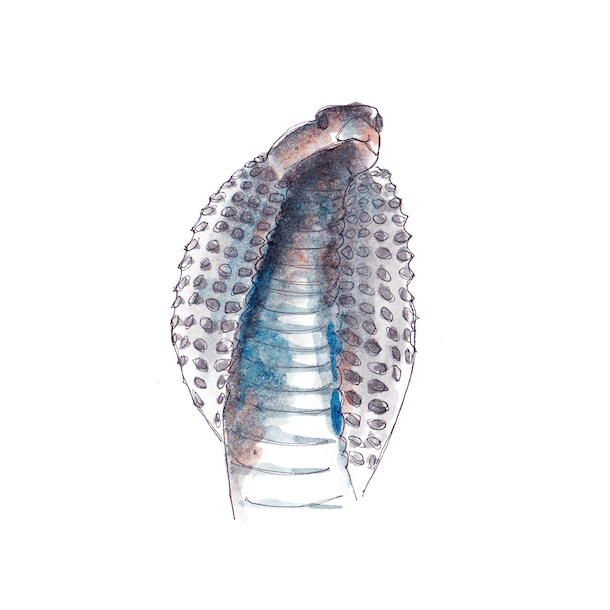
Spitting Cobra
Where do you find them?
You’ll find these onyx snakes in more remote populated areas of the little red dot, preferring to hang out in the shade wherever they can – drains, in shadowed corners, etc. They’ve occasionally been known to take trips to housing estates (there was a case of a woman finding one of these babies in her toilet a few years ago – terrifying!), but tend to go unnoticed because of their dark scales.
Are they dangerous?
Mamas, these are undoubtedly the most dangerous animals on this list. As if being highly poisonous wasn’t enough, they also will rise up and spray venom directly into the eyes of their attackers, blinding them while they make their grand escape. A nasty bite from this snake can even kill you!
What should I do if I spot one?
We know that a lot of things happen in the heat of the moment, but don’t antagonise or attack this snake. They’re not usually very aggressive and will happily slip back into the undergrowth if you don’t disturb them, however you don’t want to take any chances. As we’ve said before in regards to the other slithery snakes on this list, call a wildlife hotline trained in removing snakes to help you out as well. If you or someone in the family is sprayed with venom, make sure to rinse your eyes under the tap for 20-30 minutes and try not to rub your eyes – the poison can seep into capillaries and blind you. See a doctor as soon as you can and if you’ve been bitten, be sure to immediately rush off to the hospital while keeping the affected area as still as possible.We suppose the term ‘concrete jungle’ is more apt than we thought after all, mamas!
All of the beautiful watercolours in this post were created by Marie Pottiez; Illustrator, Sassy Girl and the wanderluster behind the travel blog Miles of Happiness. To find out more about her, see her website here!






 View All
View All





 View All
View All









 View All
View All


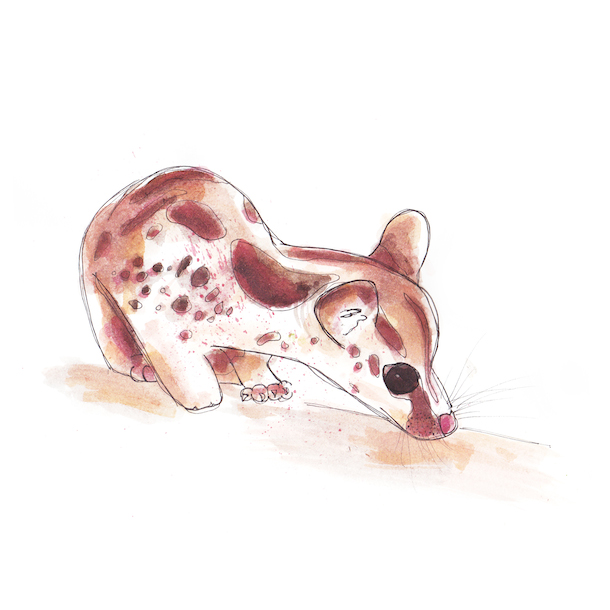

![[𝗙𝗜𝗥𝗦𝗧 𝗟𝗢𝗢𝗞] 𝗧𝗲𝗮𝗺 𝗕𝗼𝗻𝗱𝗶𝗻𝗴 𝗝𝘂𝘀𝘁 𝗚𝗼𝘁 𝗮 𝗚𝗹𝗼𝘄-𝗨𝗽 𝘄𝗶𝘁𝗵 𝗔𝗿𝘁 & 𝗡𝗲𝗼𝗻 𝗩𝗶𝗯𝗲𝘀 🎨✨ 🌟
We painted under UV lights, found our inner artists (yes, even the ones who “can’t draw”), and left with glowing masterpieces and better teamwork. SCURO’s neon art jamming is perfect for teams, friends, dates or parent-kid duos—and it’s fully beginner-friendly.
Comment "Neon" or link in bio for all the fun team-bonding spots around Singapore. You’ll want to try these. 👀
𝗪𝗵𝗮𝘁 𝘄𝗲 𝗹𝗼𝘃𝗲:
Stress-free team bonding or birthday planning
Step-by-step guidance from the friendly instructors
You get to take your artwork home
Everything’s prepped so you just show up and glow
𝗢𝗽𝗲𝗻𝗶𝗻𝗴 𝗵𝗼𝘂𝗿𝘀: 10AM to 7PM
𝗛𝗼𝘄 𝗺𝘂𝗰𝗵? From $25/pax | Min. 5 pax
𝗪𝗵𝗲𝗿𝗲: SCURO, 79 Kampong Bahru Rd, #02-01, S(169377)
.
.
.
.
.
.
#NeonArtJamming #TeamBondingSG #SCUROArtStudio #GlowPartySG #SgBirthdayIdeas #KidsBirthdayParty #ArtJammingSG #SgWeekendIdeas #IndoorActivitiesSG #SassyMamaSG #SgParents #SgMums #FunWithKidsSG #SgCreativeSpaces #WhatToDoInSingapore](https://www.sassymamasg.com/wp-content/plugins/instagram-feed/img/placeholder.png)
